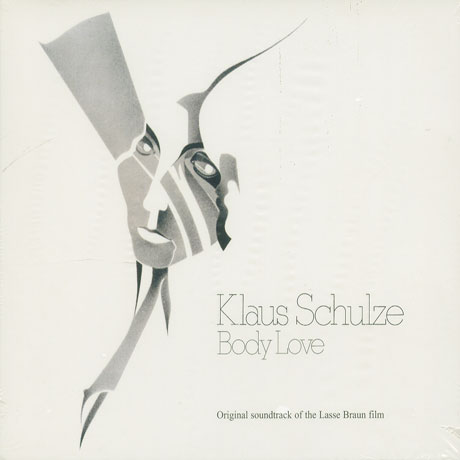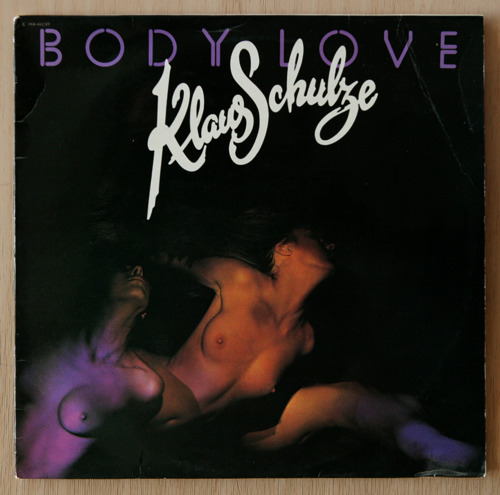Page 135 of 156
Re: Electronica - what are you listening to?
Posted: Wed Aug 07, 2013 9:35 pm
by fergus
cybot wrote:More obscure vinyl....
How very unusual for you Dermot LOL!!!
Re: Electronica - what are you listening to?
Posted: Thu Aug 08, 2013 12:19 am
by cybot
fergus wrote:cybot wrote:More obscure vinyl....
How very unusual for you Dermot LOL!!!
I guess I'm on the wrong planet Fergus ;)
Re: Electronica - what are you listening to?
Posted: Thu Aug 08, 2013 9:44 pm
by fergus
Not electronica but I had a discussion with Dermot recently on Stockhausen and I played this one this evening....

....definitely not for me Dermot!!!
Re: Electronica - what are you listening to?
Posted: Thu Aug 08, 2013 10:25 pm
by cybot
fergus wrote:Not electronica but I had a discussion with Dermot recently on Stockhausen and I played this one this evening....

....definitely not for me Dermot!!!
Told you so :) I must bring my 25 Lp Stock(hausen) and Waterman box set next time I'm up your way. You'll definitely love that ;)
Re: Electronica - what are you listening to?
Posted: Fri Aug 09, 2013 11:06 am
by fergus
cybot wrote:fergus wrote:

....definitely not for me Dermot!!!
Told you so :) I must bring my 25 Lp Stock(hausen) and Waterman box set next time I'm up your way. You'll definitely love that ;)
Perhaps Waterman (of whom I know nothing) may just bring something to the (turn)table! I will always listen, as you know, but I think that you will find it difficult to convert me on this one....although you have done so in the past in other music.
Re: Electronica - what are you listening to?
Posted: Fri Aug 09, 2013 1:18 pm
by cybot
Going to spend the afternoon getting to grips with this triple headed monster. Scary as hell itself....Don't believe me? Have a listen to the soundcloud excerpt below and see what you make of it :) After this Stockhausen will seem like the easiest listening ever lol
 https://soundcloud.com/editionsmego/kos ... ges-of-the
https://soundcloud.com/editionsmego/kos ... ges-of-the
SOMA016 / Ákos Rózmann
Images of the Dream and
A: Part I & Part II (attacca) 21:35
B: Part II 20:53
C: Part II (conclusion) & Part III 19:04
D: Part III 19:44
E: Part III 20:19
F: Part III (conclusion) 21:18
This recording is the 4th version of Images of the Dream and Death; revised at EMS/Elektronmusikstudion, Stockholm 2001 for a performance in Essen
The 1st version was realized with Buchla synthesizer at the State Academy of Music, EMS/Elektronmusikstudion, Stockholm 1974-77 (released on Phono Suecia as PS 27, 1986); the 3rd version in April 1990 (released on Phono Suecia as PSCD 27, 1991).
Composed & produced by Ákos Rózmann
Vinyl cut by Rashad Becker at Dubplates & Mastering, Berlin April 2013.
Cover painting by Ferenc Füzeskuti. Rózmann’s portrait by Per B. Adolphson.
Ideologic Organ curation and art direction by Stephen O’Malley
The first version of Bilder inför Drömmen och Döden was realized in the studios of the Royal College of Music, Stockholm and EMS (Elektronmusikstudion) 1974-77 and was premiered on 9 March 1978 at Cirkus in Stockholm. The second version was made for the first LP release in 1986 and the third version for a CD release in 1991. This edition presents Ákos Rózmann’s fourth and final version from 2001, unabridged. In 2001 he received an invitation from a festival in Essen, Germany, for a nocturnal performance of the piece in a church. He was himself in charge at the mixer at the premiere, but was very unhappy with the result. Rózmann refused to be present at his own concerts as a rule, and would rely on me to take care of the performance.
During the 1990s, the collaboration between Ákos Rózmann and myself developed to such a degree that I was trusted with the sound diffusion of his music during performances. Whenever possible, we would work together on the loudspeaker system prior to the performance of a piece. I went to the performance in Essen in his stead and before I left, we went through the piece in detail in the studio.
As with all Rózmann’s church concerts, bell-ringing is statutory before the start. The object is to “clean the air” in a spiritual sense before the performance. The piece would start straight after the last chime. The interval between part II and part III should be sufficiently long to provide the audience some respite from listening. The lighting should be soft and sacral throughout the piece. About three minutes from the end there is a shrill part where the instruction states that the audience should be blinded by a strong, white, frontal light. Where possible, the intensity of light should grow with the sound-volume. Both sound and light should become rather painful. The light should also be very suddenly cut off at the abrupt end.
—Mats Lindström, Stockholm 2013 (translation: Isabel Thomson)
The lingering feeling after hearing the works of Ákos Rózmann is the intangibility of naming what that lingering feeling is. Anyone who hears his music is moved, in as many ways possible, but why they have been moved and where to, is as difficult to put a finger on as to catch a small fleck in a bowl of water, always in sight, but forever slipping from our grasp. There is an undefinable “otherness” to his music, some might call it a strangeness, an alienness, but whatever label one chooses to apply, the actual listening to his music and the afterburn in our memory flit between each other and clouding just what his music “is”. In many ways, i personally am reminded of a church organist i knew many years ago. I was struck by how although his work was for a great number of people, he was always alone, separate from the congregants, separated in his own world surrounded by what was in many ways the control panel of some giant airship, not unlike the image Roger Daltrey at the controls of a organ pipe powered spaceship in Lisztomania, a comparison i still am unable to shake. He worked alone, prepared alone, his concentration fully on the organization and control of the pipes which he, like the wizard behind the curtain, shook into life from the keys, stops and pedals before him. A giant sound, a small hissing, air pressure and the lack of it all under his fingertips. Despite all this power before him, his work was of a small contained world, one that despite a roar that could be heard all around him existed deeply inside him, as if what we heard was just the outer layer of what was going on inside him. This has been an abiding reference for me in listening to Rozmann’s music. That Ákos Rózmann himself dedicated his life to the church organ is not an influence that can easily be ignored. In many ways, his electronic music can be seen as his way to become even more centered in his own world view, untouched by others, even farther displaced from the ears that are blessed by his sounds. His music can be analyzed, it can be categorized, it may even be canonized, but we can never really know what goes on in the mind and soul of the organist in the balcony.
—Jim O’Rourke, Tokyo 2013
Images of the Dream and Death / Bilder inför Drömmen och Döden
My intention in composing this work was, with the aid of sound, EMS and the studio of the State Academy of Music in Stockholm between August 1974 and June 1977, to portray Good and Evil.
I failed, however, to depict Good “idealistically”. The figures which I use here are always characteristic of deserted, anxious, weeping humanity. When I conjure forth the Good in the introduction to a piece, other “forces” soon make themselves felt. The beginning of the third movement, for example, reminds one of the sound of distant bells. These approaching impulses inspire peace and serenity, but all the alien elements which then reveal themselves stand in the way of “development”; their impact is devastating. The sound of the bells becomes muddied, it is transferred beyond recognition and finally ceases.
With my composition I seek to describe a process. The main emphasis is on the two contrary elements declaring themselves simultaneously, and on a scrutiny of the changes which occur when they interact.
First movement: “sounds” characterizing various “types” (Good and Evil) — cries, weeping, shrieks, grows, etc. — occur at random and are linked together by noise, movements, beats, etc.
Second movement: this portrays various forms of matter and various phenomena connected with our existence:
a. Earth
b. Water
c. Movement-energy
The structure of movements 2 and 3 is characterized by the different blocks accompanying one another. Each block is a fully worked-out unit, the meaning of which depends on the position it occupies in the development of the composition.
Third movement: the “sound types” from movement I now constitute different groups. Among them we find blocks denoting the Good (e.g. the sound of bells) or Evil (e.g. metallic rattling, violent blows, the knocking of wood-like objects). The antitheses discernible between the musical units are a new element.
– Ákos Rózmann (from Nutida Musik nr. 3 1977/78)
Ákos Rózmann was born in Hungary in 1939. He studied composition and took his organist’s and composer’s diploma at the Liszt Academy in Budapest. Between 1971 and 1974 he studied composition with Ingvar Lidholm at the State Academy of Music in Stockholm. He became organist of the Catholic Cathedral in Stockholm in 1978.
NEWS RELEASES ARTISTS
© 2013 Editions MEGO
Re: Electronica - what are you listening to?
Posted: Fri Aug 16, 2013 11:30 pm
by Fran
I;ve had this a good few years, and the recent electronica discussions prompted me to pull it out....

Re: Electronica - what are you listening to?
Posted: Fri Aug 16, 2013 11:52 pm
by cybot
Fran wrote:I;ve had this a good few years, and the recent electronica discussions prompted me to pull it out....

Nice one Fran :) I'm not ashamed to say I've never heard of him. Is he a relation of John's ;)
Must give him a blast later....
Re: Electronica - what are you listening to?
Posted: Sat Aug 17, 2013 12:25 am
by cybot
Finally released on vinyl on Record Store Day this year. Their very first album from the 90's and on double vinyl too. One of my favourite Electronica groups....and there's only two people involved: Anthony Ryan and Robin Saville take a bow :)
Their name is a humorous pun on the term ISDN (Integrated Services Digital Network) as they only use analogue equipment. So now you know :)


Re: Electronica - what are you listening to?
Posted: Sat Aug 17, 2013 8:28 pm
by cybot
Two early soundtrack classics....







